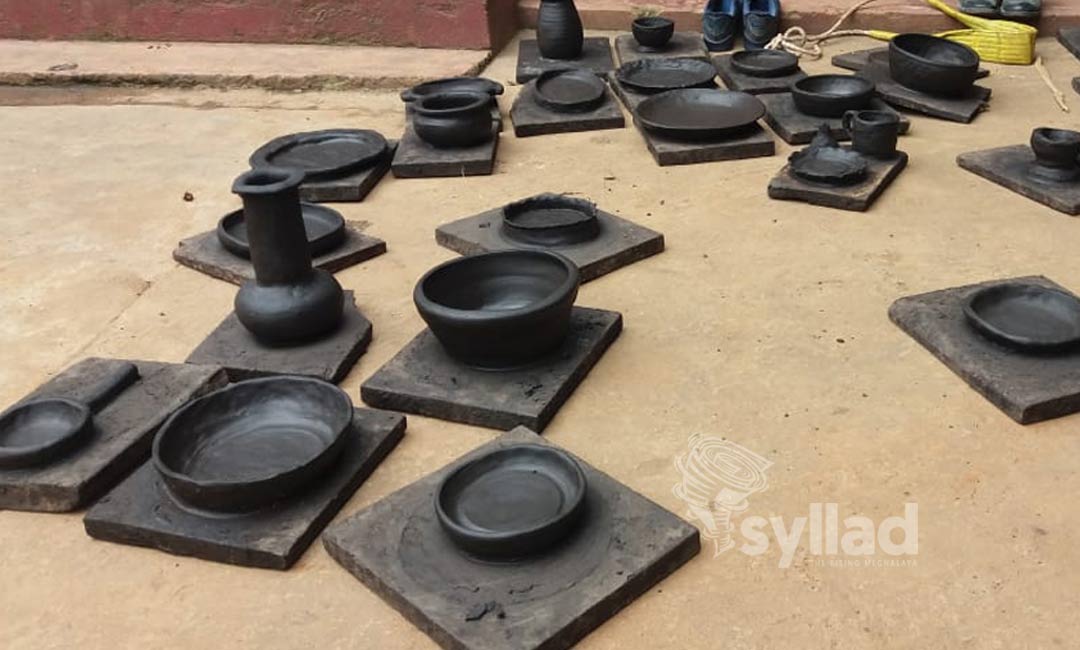Empowering Meghalaya’s artisans: GI tags granted for Larnai Pottery and more

Meghalaya achieves another major milestone as it announces the granting of four Geographical Indication (GI) tags, a testament to its rich cultural heritage and exceptional craftsmanship. Among the distinguished products receiving the prestigious GI tags are Meghalaya Garo Textile, Lyrnai Pottery, Meghalaya Chubitchi, Lakadong Turmeric.
These four GI-tagged products not only represent the cultural heritage of Meghalaya but also serve as vital sources of livelihood for approximately 30,000 individuals directly involved in their production and trade. The granting of these GI tags underscores the importance of preserving traditional knowledge, fostering sustainable livelihoods, and promoting economic growth in the region.
As Meghalaya celebrates this significant achievement, it reaffirms its commitment to preserving its rich cultural heritage and fostering sustainable development for generations to come.
On the 30th of March 2024, the Registrar of Geographical Indications, Chennai declared and awarded the coveted Geographical Indication tag No. 741 for Lakadong Turmeric vide Journal No 185 Part 1 of the Government of India. This is a seminal moment for the state and especially for the farmers of Lakadong, as both the state and Lakadong village have finally been rightfully recognized as source of the best turmeric in the world.
The 3 (three) Other GIs for Garo Dakmanda (Meghalaya Garo Textile), Larnai pottery, and the Garo Chubitchi have also been awarded GI vide journal No 185 Part 3.
Lakadong Mission: Launched on April 24, 2018, Mission Lakadong has proven to be a game-changer, focusing on elevating livelihood opportunities for farmers and agri-entrepreneurs through the promotion of Lakadong turmeric. The mission has successfully impacted over 12,000 farmers, with 20 farmer groups actively engaged in the procurement and distribution of high-quality seeds.
Larnai pottery: The GI tag coveted on the Larnai pottery underscores the distinctive nature of this age-old craft, acknowledging the specific geographical conditions of the region in imparting unique qualities and characteristics to the pottery. The journey for obtaining the GI of Larnai pottery started years back in September of 2013. The recognition not only safeguards the traditional craftsmanship but also opens avenues for economic opportunities and ensures the preservation of cultural legacies.
Dakmanda: is a traditional attire significant to the Garo tribe in Meghalaya. Worn around as a wraparound skirt, this ankle-length garment is native to the Garo hills and is traditionally woven from long-staple cotton known as ‘khidig’ and reflects the rich cultural heritage of the Garo community. The intricate designs and vibrant colours represent the aspects of their culture and not only serves as clothing but also plays a crucial role in preserving and expressing the unique identity and traditions of the Garo people.
Chubitchi: Traditional practices and rituals among the Garos include the intake of alcoholic beverage traditionally fermented, which is known to them as Chubitchi or Chubok which is paramount to their diet and culture. The liquor, which is generally a weak home-brewed beer, of a milky colour, made from rice or other grains, is even poured into the mouths of their babies as soon as they can swallow. Garos consider Chubitchi as one of the most important parts of their cultural life. Chubitchi is used during religious rituals, meetings, social gatherings, birth, marriage, during Wangala (harvest festival), housewarming ceremony, before fighting enemies (in the pre-modern era) and in almost every occasion.
Supported by the Meghalaya Farmers’ Empowerment Commission, NABARD, RO Shillong, and the State Government, this significant achievement is a testament to the collaborative efforts aimed at preserving and promoting Meghalaya’s unique traditions and artisanal expertise. Facilitated by Padma Shri Dr. Rajani Kant, a GI expert, the granting of these GI tags ushers a new era of recognition and protection for Meghalaya’s most prominent and traditional crafts.




Leave a Reply